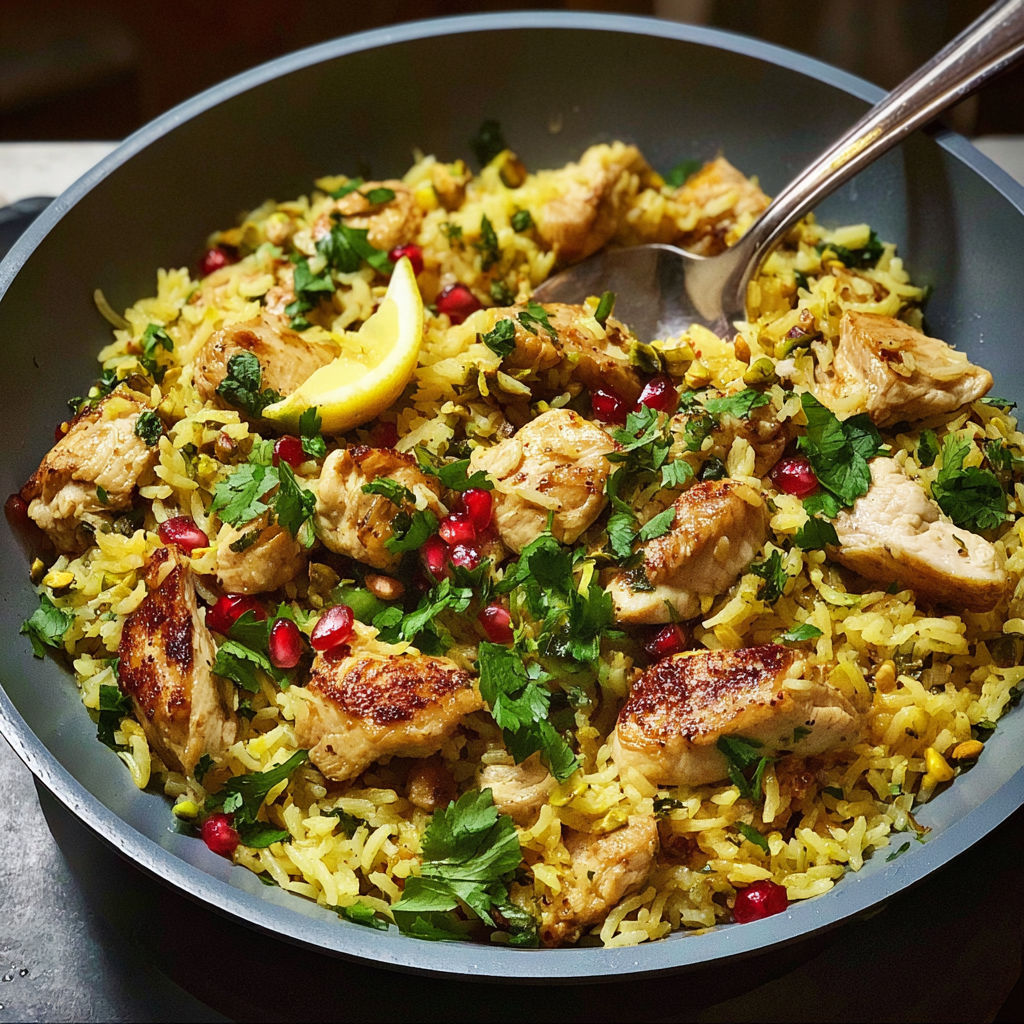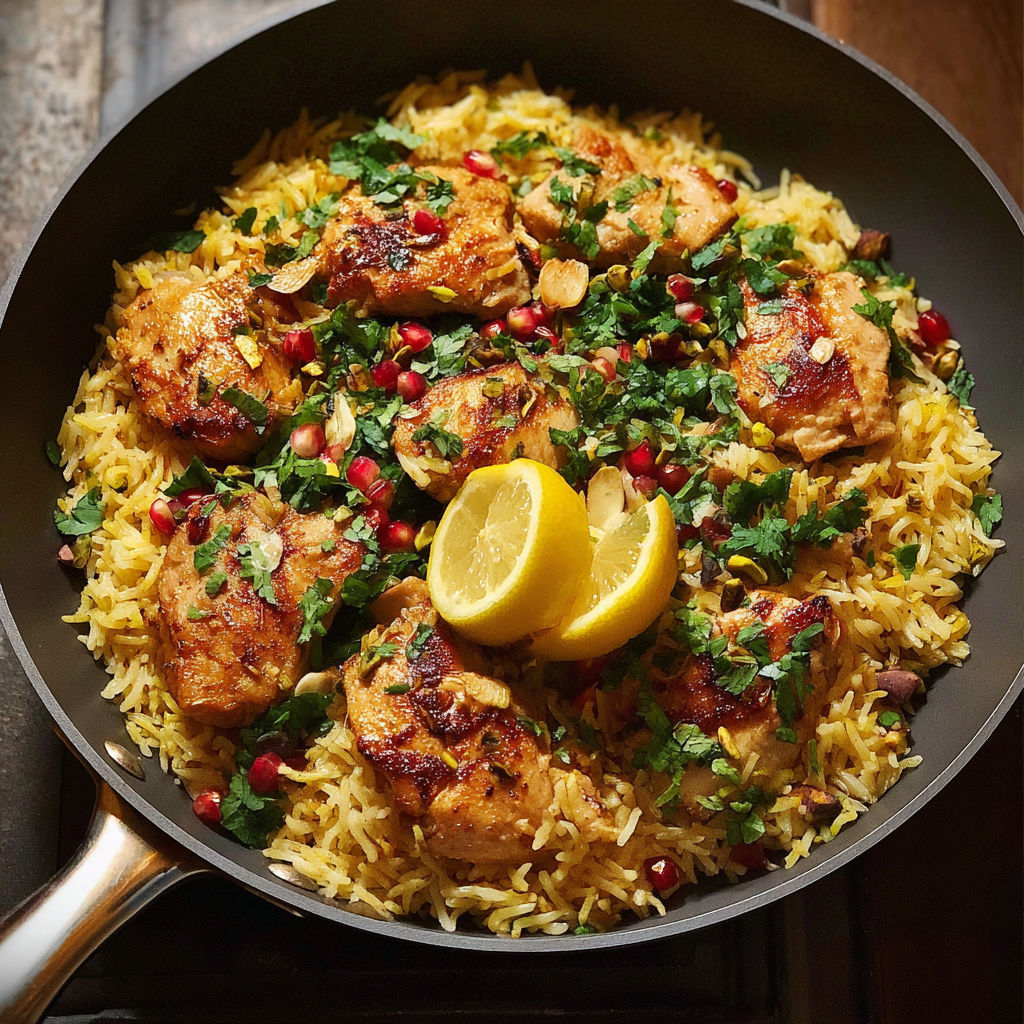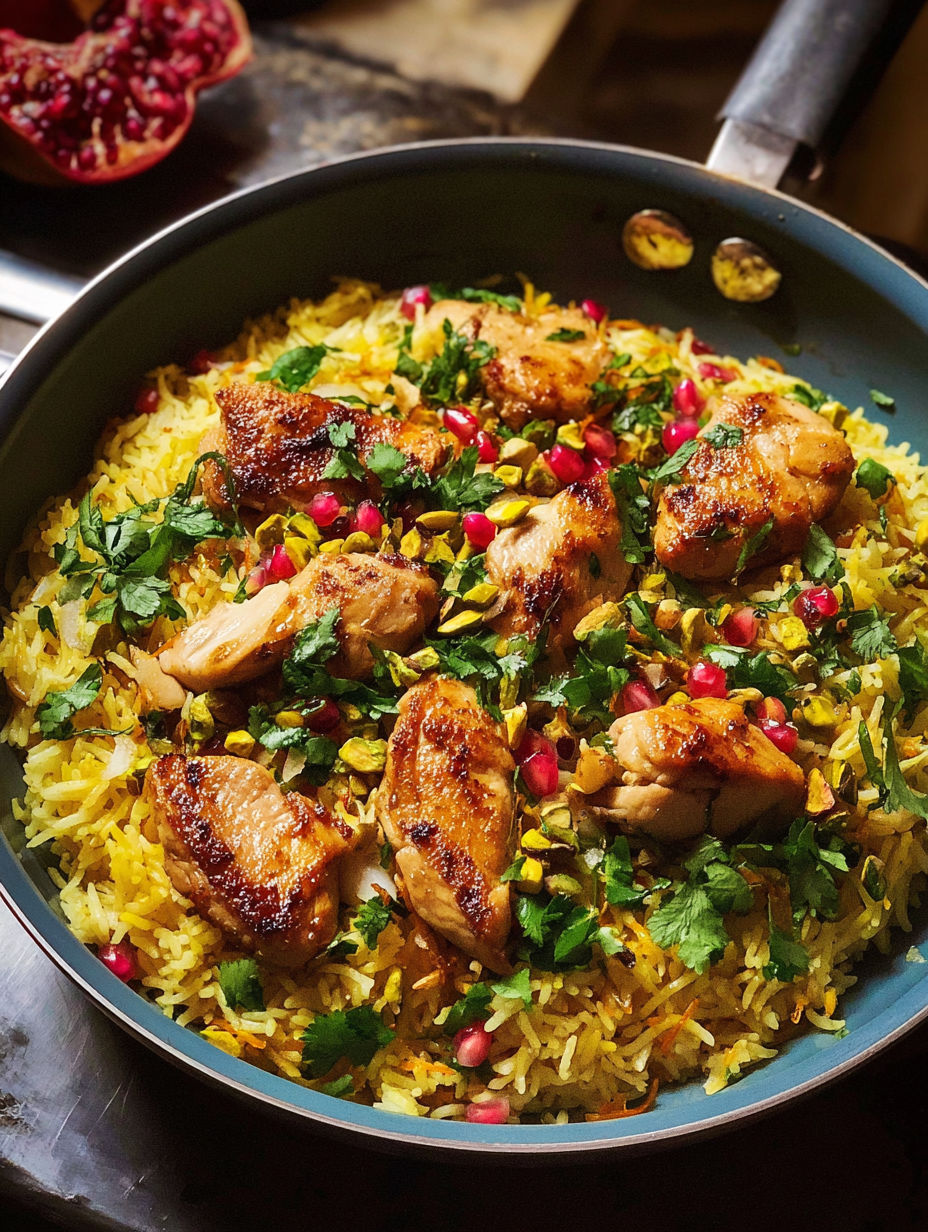 Pin it
Pin it
This aromatic Middle Eastern Chicken Pilaf whisks you away to Iran's bustling spice bazaars with each flavorful mouthful. The mix of juicy chicken, light basmati rice, and colorful nuts creates something that feels both homey and adventurous.
I whipped up this pilaf for my partner during our anniversary dinner after chatting about our Middle Eastern adventures. The wonderful smells that filled our home instantly reminded us of wandering through the lively markets of Isfahan.
What You'll Need
- Basmati rice truly the finest choice with its wonderful aroma and light, separate grains when properly cooked
- Ghee or unsalted butter creates a deep, toasty base for genuine Middle Eastern taste
- Onion and garlic the fundamental flavor-builders for this dish
- Turmeric cumin cinnamon and coriander this signature Persian spice combo gives the dish its unmistakable identity
- Saffron threads the precious treasure of Persian food adding subtle flowery hints and beautiful yellow color
- Chicken thighs juicier and more fool-proof than breast meat, staying moist throughout cooking
- Golden raisins or sultanas add sweet little pops traditional in Persian rice cooking
- Pistachios and almonds bring crunch and visual interest while honoring Persian food traditions
- Pomegranate and fresh herbs add freshness, color and liveliness
Cooking Your Middle Eastern Chicken Pilaf
- Get your rice ready
- Wash basmati rice several times until the water's clear to get rid of starch that would make it clump together. Let it soak for 20 minutes flat to help the grains absorb water for even cooking and maximum fluffiness. Don't skip this step if you want authentic results.
- Create your flavor foundation
- Cook onions in ghee over medium heat for around 5 minutes until they're soft and clear but not brown. Throw in garlic and stir in spices for a minute until they smell amazing, making sure they don't burn. This flavor base will spread throughout the whole dish.
- Cook the chicken
- Put chicken pieces into the spicy mix and season well. Cook for about 4-5 minutes, flipping now and then until you see golden edges forming. This partial cooking means your chicken will finish perfectly when the rice is done.
- Mix and cook together
- Add stock, rice, saffron-infused water and golden raisins all at the same time. Let it come to a light boil then quickly turn heat to its lowest setting. Put the lid on tight and let it simmer without touching for exactly 15 minutes. The trapped steam works magic inside.
- Let it rest then finish
- Take it off the heat without lifting the lid and let it sit covered for 10 minutes. This key step lets moisture spread evenly throughout. Finally, gently fluff with a fork while mixing in nuts and herbs. Serve right away with extra toppings.
My grandma always told me the key to this dish was waiting during that final rest time. She'd swat my hand if I tried to peek under the lid too early. That patience gives you those perfectly separate grains that mark truly great Persian cooking.
Prep It Ahead
This pilaf warms up wonderfully so it's great for parties. You can make the whole thing up to two days early and keep it in the fridge. When you're ready to eat, warm it slowly in a 325°F oven under foil with a splash of water until it's hot all the way through, about 20 minutes. Just add the fresh herbs right before serving so they look and taste their best.
 Pin it
Pin it
Swap These Ingredients
This Middle Eastern pilaf can work with whatever's in your kitchen. No saffron? Nothing truly matches its special taste, but a bit of turmeric will give you a similar golden color. You can trade chicken for lamb, beef or even chunky veggies like eggplant and cauliflower for a meat-free version. If nuts are a problem, try toasted pumpkin seeds instead. What makes it authentic is how you cook it and the spice mix, not sticking to exact ingredients.
The Story Behind It
Pilaf or polow sits at the heart of Persian food culture, going back thousands of years. In traditional Iranian homes, rice dishes show up at almost every important meal, especially celebrations. The mix of fruits, nuts and fragrant spices shows Iran's history as a meeting point of ancient trade routes. Every part of Iran puts its own spin on this classic, with family recipes kept secret and handed down for generations. Sharing this dish is like offering a taste of Persian warmth and cultural history.
 Pin it
Pin it
Frequently Asked Questions
- → Can I prep this dish ahead of time?
Totally! Make it up to 2 days before, let it cool completely, and keep it in the fridge. Warm it up slowly with a splash of water and toss in the herbs and nuts just before eating to keep them fresh.
- → Is there a good saffron alternative?
If you don’t have saffron, try 1/4 teaspoon turmeric for the color with a dash of cardamom for aroma. It’ll taste different but still great.
- → How do I make this vegetarian?
Easy swap! Use about 2 cups of roasted veggies like carrots, eggplant, or cauliflower instead of chicken. Switch out chicken broth for veggie stock and cook the same way.
- → How do I stop the rice from going soggy?
Make sure you rinse your rice really well to wash off the extra starch. Soak it before cooking, use the right water-to-rice ratio, and don’t stir while it’s cooking.
- → What should I serve with this pilaf?
This works great with a light cucumber yogurt salad, some simple baked veggies, or even a green salad with a lemony dressing. Warm flatbread and pickles round it out perfectly too.
- → Can I swap chicken thighs for breast meat?
Yep, but don’t let them overcook. Add your chicken breast pieces about 5 minutes after starting the rice to keep them tender and juicy.
